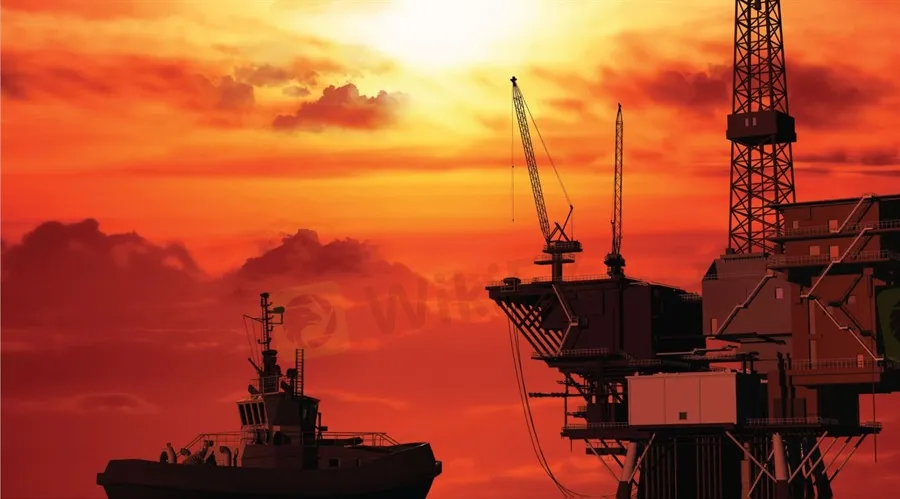简体中文
繁體中文
English
Pусский
日本語
ภาษาไทย
Tiếng Việt
Bahasa Indonesia
Español
हिन्दी
Filippiiniläinen
Français
Deutsch
Português
Türkçe
한국어
العربية
Oil Hits 7-Year High. Should We Brace for a Steep Decline?
Abstract:How concerned should investors be about market exuberance and a potential correction ahead?

Oil serves as an investment vehicle and an input cost for almost every commercial good.
The global economy has managed to shake off the pandemic shackles, resulting in growing demand for crude oil markets. Demand growth averaged 5.5 million barrels per day (bpd) in 2021, pushing WTI to become the best performing non-crypto asset class. Crude continued to rally as we entered the new year, hitting a 7-year high in January. While some investors braced for a sharp downturn, oil exhibited great resilience. Crude breached the important $90 per barrel resistance level, only to climb past $92 by February 4.
The record run had very few detractors. Money managers had a long position volume of almost 340,000 in WTI crude, eclipsing their short positions of around 27,000, in January. Market volatility threatened to spike early in the year but quickly returned to medium-term averages. Oil serves both as an investment vehicle and an input cost for almost every commercial good, and its price is critical to a wide range of investments. So, how concerned should investors be about market exuberance and a potential correction ahead?
Well Take It Lock, Stock, and Barrel
The global economy needs oil to keep its wheels greased. In its January 2022 meeting, the OPEC+ raised its demand forecast by 260,000 bpd, citing stronger demand from the advanced economies despite the spread of the Omicron variant. In the US, for example, November 2021 saw traffic reaching the highest in a decade, 12% more than in November 2020, when there were restrictions to curb the Delta variant. Although Omicron cases rose, restrictions were significantly less harsh, dampening the virus's impact on oil demand. Developing nations also exhibited demand resilience, with rising traffic and factory activity in Asia.
Demand for crude as a substitute for natural gas has also recently grown. Natural gas contract prices have not only surged but also remained incredibly volatile. The IEA estimated this trend towards crude as a substitute to have created the demand for 100,000 bpd in December. This is also reflected in the largely positive sentiment for oil and the overly negative one for natural gas on Acuitys Trading Dashboard.
Additionally, the demand strength is evident in the markets forward curve. Brent crude backwardation, the difference between front-month contract and 6-month due contract, has climbed to its steepest since 2013.
The IEA also revised its total demand forecast for 2022 to a whopping 99.7 million bpd, which is 200,000 bpd higher than the pre-pandemic levels in 2019. The OPEC's Joint Technical Committee (JTC) is more optimistic, predicting oil demand to grow by 4.2 million bpd this year.

Disclaimer:
The views in this article only represent the author's personal views, and do not constitute investment advice on this platform. This platform does not guarantee the accuracy, completeness and timeliness of the information in the article, and will not be liable for any loss caused by the use of or reliance on the information in the article.
Read more

Blockchain Decentralization: Empowering a Trustless Future
In recent years, blockchain technology has rapidly evolved from a niche innovation behind Bitcoin into a transformative force across industries. At its core, blockchain decentralization refers to the distribution of authority and decision-making away from a central entity and into the hands of a distributed network of participants. This shift redefines how data is stored and verified and paves the way for trustless, transparent, and resilient systems that challenge traditional centralized models.

The president of @Liberland, @Vít Jedlička come on stage, dialogue on trading security.
The 2025 WikiEXPO Hong Kong Station is about to grandly open. the president of @Liberland, @Vít Jedlička come on stage, dialogue on trading security.

Countdown: 1 day.WikiEXPO2025's first stop, Hong Kong, is about to open.
⏰ Countdown: 1 day. WikiEXPO2025's first stop, Hong Kong, is just tomorrow. Focus on transaction security and explore new investment opportunities. ???? Get ready to start now. See you tomorrow.

JustForex vs JustMarkets: A Comprehensive Comparison in 2025
Selecting the right forex broker can make the difference between trading success and frustration for most investors, especially retail investors. As retail traders gain unprecedented access to global markets, the choice between platforms like JustForex and JustMarkets becomes increasingly significant. Both brokers offer some shining features within the forex and CFD trading space, but their approaches differ in some areas.
WikiFX Broker
Latest News
The Withdrawal Trap: How Scam Brokers Lure Victims into Paying More
FCA to Investors: Think Twice Before Trusting These Brokers
Trump\s tariffs: How could they affect the UK and your money
Trump gambles it all on global tariffs he\s wanted for decades
TradingView Brings Live Market Charts to Telegram Users with New Mini App
Trump tariffs: How will India navigate a world on the brink of a trade war?
Interactive Brokers Launches Forecast Contracts in Canada for Market Predictions
Authorities Alert: MAS Impersonation Scam Hits Singapore
Stocks fall again as Trump tariff jitters continue
IG Group Acquires Freetrade for £160M to Expand UK Investment Market
Currency Calculator







